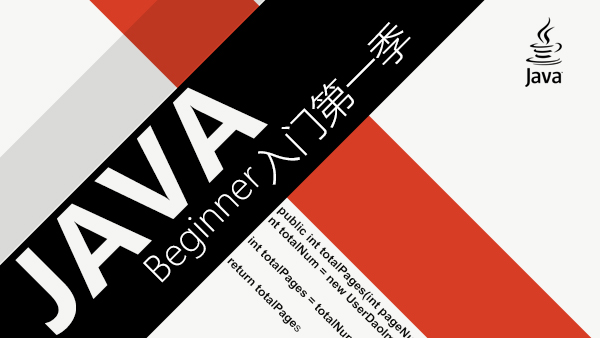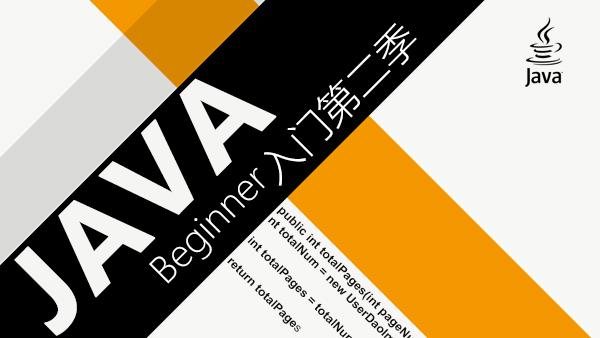从今天开始,楼主正式开始分析RecyclerView的源码。为了阅读RecyclerView的源码,楼主专门去看了View的三大流程,也就是所谓的刷装备。当然在阅读RecyclerView的源码时,也参考了其他大佬的文章,本文尽可能的贴出比较优秀的文章,正所谓他山之石,可以攻玉。
作为系列的第一篇文章,说说楼主为什么需要来专门的阅读RecyclerView的源码,主要从三大方面说起。一是RecyclerView在实际开发非常的重要,现在几乎每个app都会展示很多的数据,列表展示自然是非常好的方式,而在RecyclerView在列表中占据着举足轻重的作用,所以RecyclerView在实际开发中,是经常见的,我们得之鱼,还必须得之渔;二是现在网上分析RecyclerView的文章满篇飞,但是文章大多都比较零碎,没有系统的分析RecyclerView,本文打算系统的分析RecyclerView,也可以说是集百家之长;三是楼主本身对RecycleView的使用也是非常的频繁,但是没有深入的了解它的原理,所以这也算是对自身的一个提升。
阅读源码本身是一件非常枯燥和耗时间的事情,对楼主自身来说,也是亚历山大,害怕自己自身的经验不足,误导前来学习的同学,所以如果文章中有错误的地方,请各位大佬指点。
本系列文章楼主打算从几个地方说起。先是将RecyclerView当成一个普通的View,分别分析它的三大流程、事件传递(包括嵌套滑动);然后是分析RecyclerView的缓存原理,这也是RecyclerView的精华所在;然后分析的是RecyclerView的Adapter、LayoutManager、ItemAnimator和ItemDecoration。最后就是RecyclerView的扩展,包括LayoutManager的自定义和使用RecyclerView常见的坑等。
看到上面所写的列表,自己也不禁留下冷汗,原来RecyclerView有这么多的内容,真担心自己不能完成任务。
1. 概述
在分析RecyclerView源码之前,我们还是对RecyclerView有一个初步的了解,简单的了解它是什么,它的基本结构有哪些。
RecyclerView是Google爸爸在2014年的IO大会提出来(看来RecyclerView的年龄还是比较大了),具体目的是不是用来替代ListView的,楼主也不知道,因为那时候楼主还在读高二。但是在实际开发中,自从有了RecyclerView,ListView和GridView就很少用了,所以我们暂且认为RecyclerView的目的是替代ListView和GridView。
RecyclerView本身是一个展示大量数据的控件,相比较ListView,RecyclerView的4级缓存(也有人说是3级缓存,这些都不重要)就表现的非常出色,在性能方面相比于ListView提升了不少。同时由于LayoutManager的存在,让RecyclerView不仅有ListView的特点,同时兼有GridView的特点。这可能是RecyclerView受欢迎的原因之一吧。
RecyclerView在设计方面上也是非常的灵活,不同的部分承担着不同的职责。其中Adapter负责提供数据,包括创建ViewHolder和绑定数据,LayoutManager负责ItemView的测量和布局,ItemAnimator负责每个ItemView的动画,ItemDecoration负责每个ItemView的间隙。这种插拔式的架构使得RecyclerView变得非常的灵活,每一个人都可以根据自身的需求来定义不同的部分。
正因为这种插拔式的设计,使得RecyclerView在使用上相比较于其他的控件稍微难那么一点点,不过这都不算事,谁叫RecyclerView这么惹人爱呢。
好了,好像废话有点多,现在我们正式来分析源码吧,本文的重点是RecyclerView的三大流程。
本文参考文章:
注意,本文RecyclerView源码均来自于27.1.1
2. measure
不管RecyclerView是多么神奇,它也是一个View,所以分析它的三大流程是非常有必要的。同时,如果了解过RecyclerView的同学应该都知道,RecyclerView的三大流程跟普通的View比较,有很大的不同。
首先,我们来看看measure过程,来看看RecyclerView的onMeasure方法。
protected void onMeasure(int widthSpec, int heightSpec) { if (mLayout == null) { // 第一种情况
} if (mLayout.isAutoMeasureEnabled()) { // 第二种情况
} else { // 第三种情况
}
} onMeasure方法还是有点长,这里我将它分为3种情况,我将简单解释这三种情况。
mLayout即LayoutManager的对象。我们知道,当RecyclerView的LayoutManager为空时,RecyclerView不能显示任何的数据,在这里我们找到答案。
LayoutManager开启了自动测量时,这是一种情况。在这种情况下,有可能会测量两次。第三种情况就是没有开启自动测量的情况,这种情况比较少,因为为了
RecyclerView支持warp_content属性,系统提供的LayoutManager都开启自动测量的,不过我们还是要分析的。
首先我们来第一种情况。
(1).当LayoutManager为空时
这种情况下比较简单,我们来看看源码:
if (mLayout == null) {
defaultOnMeasure(widthSpec, heightSpec); return;
} 直接调了defaultOnMeasure方法,我们继续来看defaultOnMeasure方法。
void defaultOnMeasure(int widthSpec, int heightSpec) { // calling LayoutManager here is not pretty but that API is already public and it is better
// than creating another method since this is internal.
final int width = LayoutManager.chooseSize(widthSpec,
getPaddingLeft() + getPaddingRight(),
ViewCompat.getMinimumWidth(this)); final int height = LayoutManager.chooseSize(heightSpec,
getPaddingTop() + getPaddingBottom(),
ViewCompat.getMinimumHeight(this));
setMeasuredDimension(width, height);
} 在defaultOnMeasure方法里面,先是通过LayoutManager的chooseSize方法来计算值,然后就是setMeasuredDimension方法来设置宽高。我们来看看:
public static int chooseSize(int spec, int desired, int min) { final int mode = View.MeasureSpec.getMode(spec); final int size = View.MeasureSpec.getSize(spec); switch (mode) { case View.MeasureSpec.EXACTLY: return size; case View.MeasureSpec.AT_MOST: return Math.min(size, Math.max(desired, min)); case View.MeasureSpec.UNSPECIFIED: default: return Math.max(desired, min);
}
} chooseSize方法表达的意思比较简单,就是通过RecyclerView的测量mode来获取不同的值,这里就不详细的解释了。
到此,第一种情况就分析完毕了。因为当LayoutManager为空时,那么当RecyclerView处于onLayout阶段时,会调用dispatchLayout方法。而在dispatchLayout方法里面有这么一行代码:
if (mLayout == null) {
Log.e(TAG, "No layout manager attached; skipping layout"); // leave the state in START
return;
} 所以,当LayoutManager为空时,不显示任何数据是理所当然的。
现在我们来看看第二种情况,也就是正常的情况。
(2). 当LayoutManager开启了自动测量
在分析这种情况之前,我们先对了解几个东西。
RecyclerView的测量分为两步,分别调用dispatchLayoutStep1和dispatchLayoutStep2。同时,了解过RecyclerView源码的同学应该知道在RecyclerView的源码里面还一个dispatchLayoutStep3方法。这三个方法的方法名比较接近,所以容易让人搞混淆。本文会详细的讲解这三个方法的作用。
由于在这种情况下,只会调用dispatchLayoutStep1和dispatchLayoutStep2这两个方法,所以这里会重点的讲解这两个方法。而dispatchLayoutStep3方法的调用在RecyclerView的onLayout方法里面,所以在后面分析onLayout方法时再来看dispatchLayoutStep3方法。
我们在分析之前,先来看一个东西--mState.mLayoutStep。这个变量有几个取值情况。我们分别来看看:
| 取值 | 含义 |
|---|---|
| State.STEP_START | mState.mLayoutStep的默认值,这种情况下,表示RecyclerView还未经历dispatchLayoutStep1,因为dispatchLayoutStep1调用之后mState.mLayoutStep会变为State.STEP_LAYOUT。 |
| State.STEP_LAYOUT | 当mState.mLayoutStep为State.STEP_LAYOUT时,表示此时处于layout阶段,这个阶段会调用dispatchLayoutStep2方法layout RecyclerView的children。调用dispatchLayoutStep2方法之后,此时mState.mLayoutStep变为了State.STEP_ANIMATIONS。 |
| State.STEP_ANIMATIONS | 当mState.mLayoutStep为State.STEP_ANIMATIONS时,表示RecyclerView处于第三个阶段,也就是执行动画的阶段,也就是调用dispatchLayoutStep3方法。当dispatchLayoutStep3方法执行完毕之后,mState.mLayoutStep又变为了State.STEP_START。 |
从上表中,我们了解到mState.mLayoutStep的三个状态对应着不同的dispatchLayoutStep方法。这一点,我们必须清楚,否则接下来的代码将难以理解。
好了,前戏准备的差不多,现在应该进入高潮了。我们开始正式的分析源码了。
if (mLayout.isAutoMeasureEnabled()) { final int widthMode = MeasureSpec.getMode(widthSpec); final int heightMode = MeasureSpec.getMode(heightSpec); /**
* This specific call should be considered deprecated and replaced with
* {@link #defaultOnMeasure(int, int)}. It can't actually be replaced as it could
* break existing third party code but all documentation directs developers to not
* override {@link LayoutManager#onMeasure(int, int)} when
* {@link LayoutManager#isAutoMeasureEnabled()} returns true.
*/
mLayout.onMeasure(mRecycler, mState, widthSpec, heightSpec); final boolean measureSpecModeIsExactly =
widthMode == MeasureSpec.EXACTLY && heightMode == MeasureSpec.EXACTLY; if (measureSpecModeIsExactly || mAdapter == null) { return;
} if (mState.mLayoutStep == State.STEP_START) {
dispatchLayoutStep1();
} // set dimensions in 2nd step. Pre-layout should happen with old dimensions for
// consistency
mLayout.setMeasureSpecs(widthSpec, heightSpec);
mState.mIsMeasuring = true;
dispatchLayoutStep2(); // now we can get the width and height from the children.
mLayout.setMeasuredDimensionFromChildren(widthSpec, heightSpec); // if RecyclerView has non-exact width and height and if there is at least one child
// which also has non-exact width & height, we have to re-measure.
if (mLayout.shouldMeasureTwice()) {
mLayout.setMeasureSpecs(
MeasureSpec.makeMeasureSpec(getMeasuredWidth(), MeasureSpec.EXACTLY),
MeasureSpec.makeMeasureSpec(getMeasuredHeight(), MeasureSpec.EXACTLY));
mState.mIsMeasuring = true;
dispatchLayoutStep2(); // now we can get the width and height from the children.
mLayout.setMeasuredDimensionFromChildren(widthSpec, heightSpec);
}
}我将这段代码分为三步。我们来看看:
调用
LayoutManager的onMeasure方法进行测量。对于onMeasure方法,我也感觉到非常的迷惑,发现传统的LayoutManager都没有实现这个方法。后面,我们会将简单的看一下这个方法。如果
mState.mLayoutStep为State.STEP_START的话,那么就会执行dispatchLayoutStep1方法,然后会执行dispatchLayoutStep2方法。如果需要第二次测量的话,会再一次调用
dispatchLayoutStep2方法。
以上三步,我们一步一步的来分析。首先,我们来看看第一步,也是看看onMeasure方法。
LayoutManager的onMeasure方法究竟为我们做什么,我们来看看:
public void onMeasure(Recycler recycler, State state, int widthSpec, int heightSpec) {
mRecyclerView.defaultOnMeasure(widthSpec, heightSpec);
} 默认是调用的RecyclerView的defaultOnMeasure方法,至于defaultOnMeasure方法里面究竟做了什么,这在前面已经介绍过了,这里就不再介绍了。
View的onMeasure方法的作用通产来说有两个。一是测量自身的宽高,从RecyclerView来看,它将自己的测量工作托管给了LayoutManager的onMeasure方法。所以,我们在自定义LayoutManager时,需要注意onMeasure方法存在,不过从官方提供的几个LayoutManager,都没有重写这个方法。所以不到万得已,最好不要重写LayoutManager的onMeasure方法;二是测量子View,不过到这里我们还没有看到具体的实现。
接下来,我们来分析第二步,看看dispatchLayoutStep1方法和dispatchLayoutStep2方法究竟做了什么。
在正式分析第二步之前,我们先对这三个方法有一个大概的认识。
| 方法名 | 作用 |
|---|---|
| dispatchLayoutStep1 | 三大dispatchLayoutStep方法第一步。本方法的作用主要有三点:1.处理Adapter更新;2.决定是否执行ItemAnimator;3.保存ItemView的动画信息。本方法也被称为preLayout(预布局),当Adapter更新了,这个方法会保存每个ItemView的旧信息(oldViewHolderInfo) |
| dispatchLayoutStep2 | 三大dispatchLayoutStep方法第二步。在这个方法里面,真正进行children的测量和布局。 |
| dispatchLayoutStep3 | 三大dispatchLayoutStep方法第三步。这个方法的作用执行在dispatchLayoutStep1方法里面保存的动画信息。本方法不是本文的介绍重点,后面在介绍ItemAnimator时,会重点分析这个方法。 |
我们回到onMeasure方法里面,先看看整个执行过程。
if (mState.mLayoutStep == State.STEP_START) {
dispatchLayoutStep1();
}
// set dimensions in 2nd step. Pre-layout should happen with old dimensions for
// consistency
mLayout.setMeasureSpecs(widthSpec, heightSpec);
mState.mIsMeasuring = true;
dispatchLayoutStep2(); 如果mState.mLayoutStep == State.STEP_START时,才会调用 dispatchLayoutStep1方法,这里与我们前面介绍mLayoutStep对应起来了。现在我们看看dispatchLayoutStep1方法
private void dispatchLayoutStep1() {
mState.assertLayoutStep(State.STEP_START);
fillRemainingScrollValues(mState);
mState.mIsMeasuring = false;
startInterceptRequestLayout();
mViewInfoStore.clear();
onEnterLayoutOrScroll();
processAdapterUpdatesAndSetAnimationFlags();
saveFocusInfo();
mState.mTrackOldChangeHolders = mState.mRunSimpleAnimations && mItemsChanged;
mItemsAddedOrRemoved = mItemsChanged = false;
mState.mInPreLayout = mState.mRunPredictiveAnimations;
mState.mItemCount = mAdapter.getItemCount();
findMinMaxChildLayoutPositions(mMinMaxLayoutPositions); if (mState.mRunSimpleAnimations) { // 找到没有被remove的ItemView,保存OldViewHolder信息,准备预布局
} if (mState.mRunPredictiveAnimations) { // 进行预布局
} else {
clearOldPositions();
}
onExitLayoutOrScroll();
stopInterceptRequestLayout(false);
mState.mLayoutStep = State.STEP_LAYOUT;
} 本文只简单分析一下这个方法,因为这个方法跟ItemAnimator有莫大的关系,后续在介绍ItemAnimator时会详细的分析。在这里,我们将重点放在processAdapterUpdatesAndSetAnimationFlags里面,因为这个方法计算了mRunSimpleAnimations和mRunPredictiveAnimations。
private void processAdapterUpdatesAndSetAnimationFlags() { if (mDataSetHasChangedAfterLayout) { // Processing these items have no value since data set changed unexpectedly.
// Instead, we just reset it.
mAdapterHelper.reset(); if (mDispatchItemsChangedEvent) {
mLayout.onItemsChanged(this);
}
} // simple animations are a subset of advanced animations (which will cause a
// pre-layout step)
// If layout supports predictive animations, pre-process to decide if we want to run them
if (predictiveItemAnimationsEnabled()) {
mAdapterHelper.preProcess();
} else {
mAdapterHelper.consumeUpdatesInOnePass();
} boolean animationTypeSupported = mItemsAddedOrRemoved || mItemsChanged;
mState.mRunSimpleAnimations = mFirstLayoutComplete
&& mItemAnimator != null
&& (mDataSetHasChangedAfterLayout
|| animationTypeSupported
|| mLayout.mRequestedSimpleAnimations)
&& (!mDataSetHasChangedAfterLayout
|| mAdapter.hasStableIds());
mState.mRunPredictiveAnimations = mState.mRunSimpleAnimations
&& animationTypeSupported
&& !mDataSetHasChangedAfterLayout
&& predictiveItemAnimationsEnabled();
} 这里我们的重心放在mFirstLayoutComplete变量里面,我们发现mRunSimpleAnimations的值与mFirstLayoutComplete有关,mRunPredictiveAnimations同时跟mRunSimpleAnimations有关。所以这里我们可以得出一个结论,当RecyclerView第一次加载数据时,是不会执行的动画。换句话说,每个ItemView还没有layout完毕,怎么会进行动画。这一点,我们也可以通过Demo来证明,这里也就不展示了。
接下来我们看看dispatchLayoutStep2方法,这个方法是真正布局children。我们来看看:
private void dispatchLayoutStep2() {
startInterceptRequestLayout();
onEnterLayoutOrScroll();
mState.assertLayoutStep(State.STEP_LAYOUT | State.STEP_ANIMATIONS);
mAdapterHelper.consumeUpdatesInOnePass();
mState.mItemCount = mAdapter.getItemCount();
mState.mDeletedInvisibleItemCountSincePreviousLayout = 0; // Step 2: Run layout
mState.mInPreLayout = false;
mLayout.onLayoutChildren(mRecycler, mState);
mState.mStructureChanged = false;
mPendingSavedState = null; // onLayoutChildren may have caused client code to disable item animations; re-check
mState.mRunSimpleAnimations = mState.mRunSimpleAnimations && mItemAnimator != null;
mState.mLayoutStep = State.STEP_ANIMATIONS;
onExitLayoutOrScroll();
stopInterceptRequestLayout(false);
} 在这里,我们重点的看两行代码。一是在这里,我们可以看到Adapter的getItemCount方法被调用;二是调用了LayoutManager的onLayoutChildren方法,这个方法里面进行对children的测量和布局,同时这个方法也是这里的分析重点。
系统的LayoutManager的onLayoutChildren方法是一个空方法,所以需要LayoutManager的子类自己来实现。从这里,我们可以得出两个点。
子类
LayoutManager需要自己实现onLayoutChildren方法,从而来决定RecyclerView在该LayoutManager的策略下,应该怎么布局。从这里,我们看出来RecyclerView的灵活性。
LayoutManager类似于ViewGroup,将onLayoutChildren方法(ViewGroup是onLayout方法)公开出来,这种模式在Android中很常见的。
这里,我先不对onLayoutChildren方法进行展开,待会会详细的分析。
接下来,我们来分析第三种情况--没有开启自动测量。
(3).没有开启自动测量
我们先来看看这一块的代码。
if (mHasFixedSize) {
mLayout.onMeasure(mRecycler, mState, widthSpec, heightSpec); return;
} // custom onMeasure
if (mAdapterUpdateDuringMeasure) {
startInterceptRequestLayout();
onEnterLayoutOrScroll();
processAdapterUpdatesAndSetAnimationFlags();
onExitLayoutOrScroll(); if (mState.mRunPredictiveAnimations) {
mState.mInPreLayout = true;
} else { // consume remaining updates to provide a consistent state with the layout pass.
mAdapterHelper.consumeUpdatesInOnePass();
mState.mInPreLayout = false;
}
mAdapterUpdateDuringMeasure = false;
stopInterceptRequestLayout(false);
} else if (mState.mRunPredictiveAnimations) { // If mAdapterUpdateDuringMeasure is false and mRunPredictiveAnimations is true:
// this means there is already an onMeasure() call performed to handle the pending
// adapter change, two onMeasure() calls can happen if RV is a child of LinearLayout
// with layout_width=MATCH_PARENT. RV cannot call LM.onMeasure() second time
// because getViewForPosition() will crash when LM uses a child to measure.
setMeasuredDimension(getMeasuredWidth(), getMeasuredHeight()); return;
} if (mAdapter != null) {
mState.mItemCount = mAdapter.getItemCount();
} else {
mState.mItemCount = 0;
}
startInterceptRequestLayout();
mLayout.onMeasure(mRecycler, mState, widthSpec, heightSpec);
stopInterceptRequestLayout(false);
mState.mInPreLayout = false; // clear例如上面的代码,我将分为2步:
如果
mHasFixedSize为true(也就是调用了setHasFixedSize方法),将直接调用LayoutManager的onMeasure方法进行测量。如果
mHasFixedSize为false,同时此时如果有数据更新,先处理数据更新的事务,然后调用LayoutManager的onMeasure方法进行测量
通过上面的描述,我们知道,如果未开启自动测量,那么肯定会调用LayoutManager的onMeasure方法来进行测量,这就是LayoutManager的onMeasure方法的作用。
至于onMeasure方法怎么进行测量,那就得看LayoutManager的实现类。在这里,我们就不进行深入的追究了。
3. layout
measure过程分析的差不多了,接下来我们就该分析第二个过程--layout。我们来看看onLayout方法:
@Override
protected void onLayout(boolean changed, int l, int t, int r, int b) {
TraceCompat.beginSection(TRACE_ON_LAYOUT_TAG);
dispatchLayout();
TraceCompat.endSection();
mFirstLayoutComplete = true;
} onLayout方法本身没有做多少的事情,重点还是在dispatchLayout方法里面。
void dispatchLayout() { if (mAdapter == null) {
Log.e(TAG, "No adapter attached; skipping layout"); // leave the state in START
return;
} if (mLayout == null) {
Log.e(TAG, "No layout manager attached; skipping layout"); // leave the state in START
return;
}
mState.mIsMeasuring = false; if (mState.mLayoutStep == State.STEP_START) {
dispatchLayoutStep1();
mLayout.setExactMeasureSpecsFrom(this);
dispatchLayoutStep2();
} else if (mAdapterHelper.hasUpdates() || mLayout.getWidth() != getWidth()
|| mLayout.getHeight() != getHeight()) { // First 2 steps are done in onMeasure but looks like we have to run again due to
// changed size.
mLayout.setExactMeasureSpecsFrom(this);
dispatchLayoutStep2();
} else { // always make sure we sync them (to ensure mode is exact)
mLayout.setExactMeasureSpecsFrom(this);
}
dispatchLayoutStep3();
} dispatchLayout方法也是非常的简单,这个方法保证RecyclerView必须经历三个过程--dispatchLayoutStep1、dispatchLayoutStep2、dispatchLayoutStep3。
同时,在后面的文章中,你会看到dispatchLayout方法其实还为RecyclerView节省了很多步骤,也就是说,在RecyclerView经历一次完整的dispatchLayout之后,后续如果参数有所变化时,可能只会经历最后的1步或者2步。当然这些都是后话了。
对于dispatchLayoutStep1和dispatchLayoutStep2方法,我们前面已经讲解了,这里就不做过多的解释了。这里,我们就简单的看一下dispatchLayoutStep3方法吧。
private void dispatchLayoutStep3() { // ······
mState.mLayoutStep = State.STEP_START; // ······
} 为什么这里只是简单看一下dispatchLayoutStep3方法呢?因为这个方法主要是做Item的动画,也就是我们熟知的ItemAnimator的执行,而本文不对动画进行展开,所以先省略动画部分。
在这里,我们需要关注dispatchLayoutStep3方法的是,它将mLayoutStep重置为了State.STEP_START。也就是说如果下一次重新开始dispatchLayout的话,那么肯定会经历dispatchLayoutStep1、dispatchLayoutStep2、dispatchLayoutStep3三个方法。
以上就是RecyclerView的layout过程,是不是感觉非常的简单?RecyclerView跟其他ViewGroup不同的地方在于,如果开启了自动测量,在measure阶段,已经将Children布局完成了;如果没有开启自动测量,则在layout阶段才布局Children。
4. draw
接下来,我们来分析三大流程的最后一个阶段--draw。在正式分析draw过程之前,我先来对RecyclerView的draw做一个概述。
RecyclerView分为三步,我们来看看:
调用
super.draw方法。这里主要做了两件事:1. 将Children的绘制分发给ViewGroup;2. 将分割线的绘制分发给ItemDecoration。如果需要的话,调用
ItemDecoration的onDrawOver方法。通过这个方法,我们在每个ItemView上面画上很多东西。如果
RecyclerView调用了setClipToPadding,会实现一种特殊的滑动效果--每个ItemView可以滑动到padding区域。
我们来看看这部分的代码:
public void draw(Canvas c) { // 第一步
super.draw(c); // 第二步
final int count = mItemDecorations.size(); for (int i = 0; i < count; i++) {
mItemDecorations.get(i).onDrawOver(c, this, mState);
} // 第三步
// TODO If padding is not 0 and clipChildrenToPadding is false, to draw glows properly, we
// need find children closest to edges. Not sure if it is worth the effort.
// ······
} 熟悉三大流程的同学,肯定知道第一步会回调到onDraw方法里面,也就是说关于Children的绘制和ItemDecoration的绘制,是在onDraw方法里面。
@Override
public void onDraw(Canvas c) { super.onDraw(c); final int count = mItemDecorations.size(); for (int i = 0; i < count; i++) {
mItemDecorations.get(i).onDraw(c, this, mState);
}
} onDraw方法是不是非常的简单?调用super.onDraw方法将Children的绘制分发给ViewGroup执行;然后将ItemDecoration的绘制分发到ItemDecoration的onDraw方法里面去。从这里,我们可以看出来,RecyclerView的设计实在是太灵活了!
至于其余两步都比较简单,这里就不详细分析了。不过,从这里,我们终于明白了ItemDecoration的onDraw方法和onDrawOver方法的区别。
5. LayoutManager的onLayoutChildren方法
从整体来说,RecyclerView的三大流程还是比较简单,不过在整个过程中,我们似乎忽略了一个过程--那就是RecyclerView到底是怎么layout children的?
前面在介绍dispatchLayoutStep2方法时,只是简单的介绍了,RecyclerView通过调用LayoutManager的onLayoutChildren方法。LayoutManager本身对这个方法没有进行实现,所以必须得看看它的子类,这里我们就来看看LinearLayoutManager。
由于LinearLayoutManager的onLayoutChildren方法比较长,这里不可能贴出完整的代码,所以这里我先对这个方法做一个简单的概述,方便大家理解。
确定锚点的信息,这里面的信息包括:1.
Children的布局方向,有start和end两个方向;2.mPosition和mCoordinate,分别表示Children开始填充的position和坐标。调用
detachAndScrapAttachedViews方法,detach掉或者remove掉RecyclerView的Children。这一点本来不在本文的讲解范围内,但是为了后续对RecyclerView的缓存机制有更好的了解,这里特别的提醒一下。根据锚点信息,调用
fill方法进行Children的填充。这个过程中根据锚点信息的不同,可能会调用两次fill方法。
接下来,我们看看代码:
public void onLayoutChildren(RecyclerView.Recycler recycler, RecyclerView.State state) { // layout algorithm:
// 1) by checking children and other variables, find an anchor coordinate and an anchor
// item position.
// 2) fill towards start, stacking from bottom
// 3) fill towards end, stacking from top
// 4) scroll to fulfill requirements like stack from bottom.
// create layout state
// ······
// 第一步
final View focused = getFocusedChild(); if (!mAnchorInfo.mValid || mPendingScrollPosition != NO_POSITION
|| mPendingSavedState != null) {
mAnchorInfo.reset();
mAnchorInfo.mLayoutFromEnd = mShouldReverseLayout ^ mStackFromEnd; // calculate anchor position and coordinate
updateAnchorInfoForLayout(recycler, state, mAnchorInfo);
mAnchorInfo.mValid = true;
} // ······
// 第二步
detachAndScrapAttachedViews(recycler);
mLayoutState.mIsPreLayout = state.isPreLayout(); // 第三步
if (mAnchorInfo.mLayoutFromEnd) { // fill towards start
updateLayoutStateToFillStart(mAnchorInfo);
mLayoutState.mExtra = extraForStart;
fill(recycler, mLayoutState, state, false);
startOffset = mLayoutState.mOffset; final int firstElement = mLayoutState.mCurrentPosition; if (mLayoutState.mAvailable > 0) {
extraForEnd += mLayoutState.mAvailable;
} // fill towards end
updateLayoutStateToFillEnd(mAnchorInfo);
mLayoutState.mExtra = extraForEnd;
mLayoutState.mCurrentPosition += mLayoutState.mItemDirection;
fill(recycler, mLayoutState, state, false);
endOffset = mLayoutState.mOffset; if (mLayoutState.mAvailable > 0) { // end could not consume all. add more items towards start
extraForStart = mLayoutState.mAvailable;
updateLayoutStateToFillStart(firstElement, startOffset);
mLayoutState.mExtra = extraForStart;
fill(recycler, mLayoutState, state, false);
startOffset = mLayoutState.mOffset;
}
} else { // fill towards end
updateLayoutStateToFillEnd(mAnchorInfo);
mLayoutState.mExtra = extraForEnd;
fill(recycler, mLayoutState, state, false);
endOffset = mLayoutState.mOffset; final int lastElement = mLayoutState.mCurrentPosition; if (mLayoutState.mAvailable > 0) {
extraForStart += mLayoutState.mAvailable;
} // fill towards start
updateLayoutStateToFillStart(mAnchorInfo);
mLayoutState.mExtra = extraForStart;
mLayoutState.mCurrentPosition += mLayoutState.mItemDirection;
fill(recycler, mLayoutState, state, false);
startOffset = mLayoutState.mOffset; if (mLayoutState.mAvailable > 0) {
extraForEnd = mLayoutState.mAvailable; // start could not consume all it should. add more items towards end
updateLayoutStateToFillEnd(lastElement, endOffset);
mLayoutState.mExtra = extraForEnd;
fill(recycler, mLayoutState, state, false);
endOffset = mLayoutState.mOffset;
}
} // ······
} 相信从上面的代码都可以找出每一步的执行。现在,我们来详细分析每一步。首先来看第一步--确定锚点的信息。
要想看锚点信息的计算过程,我们可以从updateAnchorInfoForLayout方法里面来找出答案,我们来看看updateAnchorInfoForLayout方法:
private void updateAnchorInfoForLayout(RecyclerView.Recycler recycler, RecyclerView.State state,
AnchorInfo anchorInfo) { // 第一种计算方式
if (updateAnchorFromPendingData(state, anchorInfo)) { return;
} // 第二种计算方式
if (updateAnchorFromChildren(recycler, state, anchorInfo)) { return;
} // 第三种计算方式
anchorInfo.assignCoordinateFromPadding();
anchorInfo.mPosition = mStackFromEnd ? state.getItemCount() - 1 : 0;
} 我相信通过上面的代码注释,大家都能明白updateAnchorInfoForLayout方法到底干了嘛,这里我简单分析一下这三种确定所做的含义,具体是怎么做的,这里就不讨论,因为这里面的细节太多了,深入的讨论容易将我们聪明无比的大脑搞晕。
第一种计算方式,表示含义有两种:1.
RecyclerView被重建,期间回调了onSaveInstanceState方法,所以目的是为了恢复上次的布局;2.RecyclerView调用了scrollToPosition之类的方法,所以目的是让RecyclerView滚到准确的位置上去。所以,锚点的信息根据上面的两种情况来计算。第二种计算方法,从
Children上面来计算锚点信息。这种计算方式也有两种情况:1. 如果当前有拥有焦点的Child,那么有当前有焦点的Child的位置来计算锚点;2. 如果没有child拥有焦点,那么根据布局方向(此时布局方向由mLayoutFromEnd来决定)获取可见的第一个ItemView或者最后一个ItemView。如果前面两种方式都计算失败了,那么采用第三种计算方式,也就是默认的计算方式。
以上就是updateAnchorInfoForLayout方法所做的事情,这里就不详细纠结每种计算方式的细节,有兴趣的同学可以看看。
至于第二步,调用detachAndScrapAttachedViews方法对所有的ItemView进行回收,这部分的内容属于RecyclerView缓存机制的部分,本文先在这里埋下一个伏笔,后续专门讲解RecyclerView会详细的分析它,所以这里就不讲解了。
接下来我们来看看第三步,也就是调用fill方法来填充Children。在正式分析填充过程时,我们先来看一张图片:

作者:琼珶和予
链接:https://www.jianshu.com/p/61fe3f3bb7ec

 随时随地看视频
随时随地看视频




